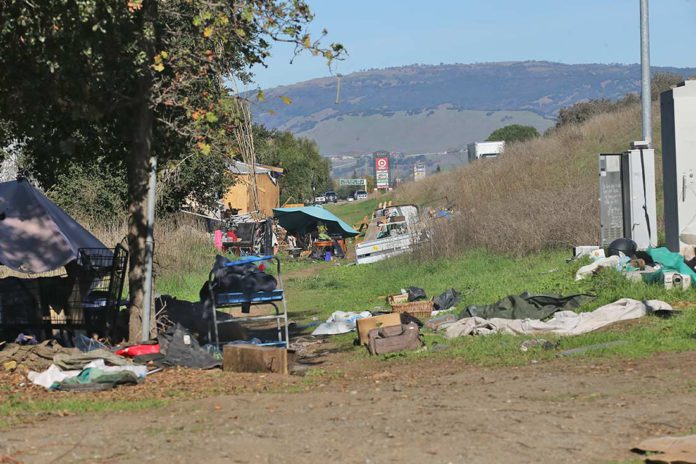The Santa Clara Valley Water District Board of Directors on July 9 held off on a decision regarding an ordinance that would prohibit homeless encampments along waterways in the water district’s jurisdiction.
After hours’ worth of public testimony from speakers on both sides of the controversial ordinance, the seven-member board unanimously agreed to wait until after an Oct. 11 community workshop on the matter before reconsidering the proposal that would give Valley Water more legal tools to reduce homeless encampments, public nuisances and hazardous activities near the creeks.
Valley Water CEO Rick Callender said it had been a troubling path for staff to recommend the proposal, but it followed challenges they continued to face while going about their routine environmental work, including violence and threats from those living unhoused near the creeks and waterways.
“Staff is not suggesting to harm those who are already downtrodden, and that’s why we’re seeking compliance and a compassionate solution within our capabilities,” Callender said prior to the Board decision. “Our existing and ongoing policy at Valley Water is to offer up properties away from the creeks and the floodplain for services for the unhoused. That includes potential safe sleeping sites, sites for small homes and more.”
Ahead of the decision to table the item, public speakers expressed both support and opposition to the ordinance.
Opponents said the ordinance would criminalize the homeless with no real solution for the root cause of the issue. Nonprofit leaders, college students, unhoused individuals and others who expressed concerns with the proposal called it inhumane to abate the area with no place for the homeless to go.
“We can solve these problems. We can address these problems without criminalizing people for trying to survive,” said Jan Bernstein Chargin, board chair of nonprofit PitStop Outreach, which serves unhoused residents of Gilroy. “That may not be the intent, but it will be the outcome that will make people’s lives worse, clog up the courts and accomplish absolutely nothing.”
Proponents, however, were glad to see the water district taking action to clean up the waterways, with some sharing how people from the encampments had impacted their nearby neighborhoods and sense of safety.
Daniel Costa, who said he was formerly homeless and once part of the pollution problem near the waterways, expressed support of the ordinance because he now wants to be part of the solution.
“The only ones who are going to get criminalized are the ones who choose to get criminalized by not cooperating with the plan of safe sleeping sites,” Costa said.
The planned Oct. 11 summit aims to bring together local leaders from Santa Clara County, South Bay cities, businesses, nonprofits and advocacy organizations to discuss ways to address unsheltered encampments.
Copyright © 2024 Bay City News, Inc.








